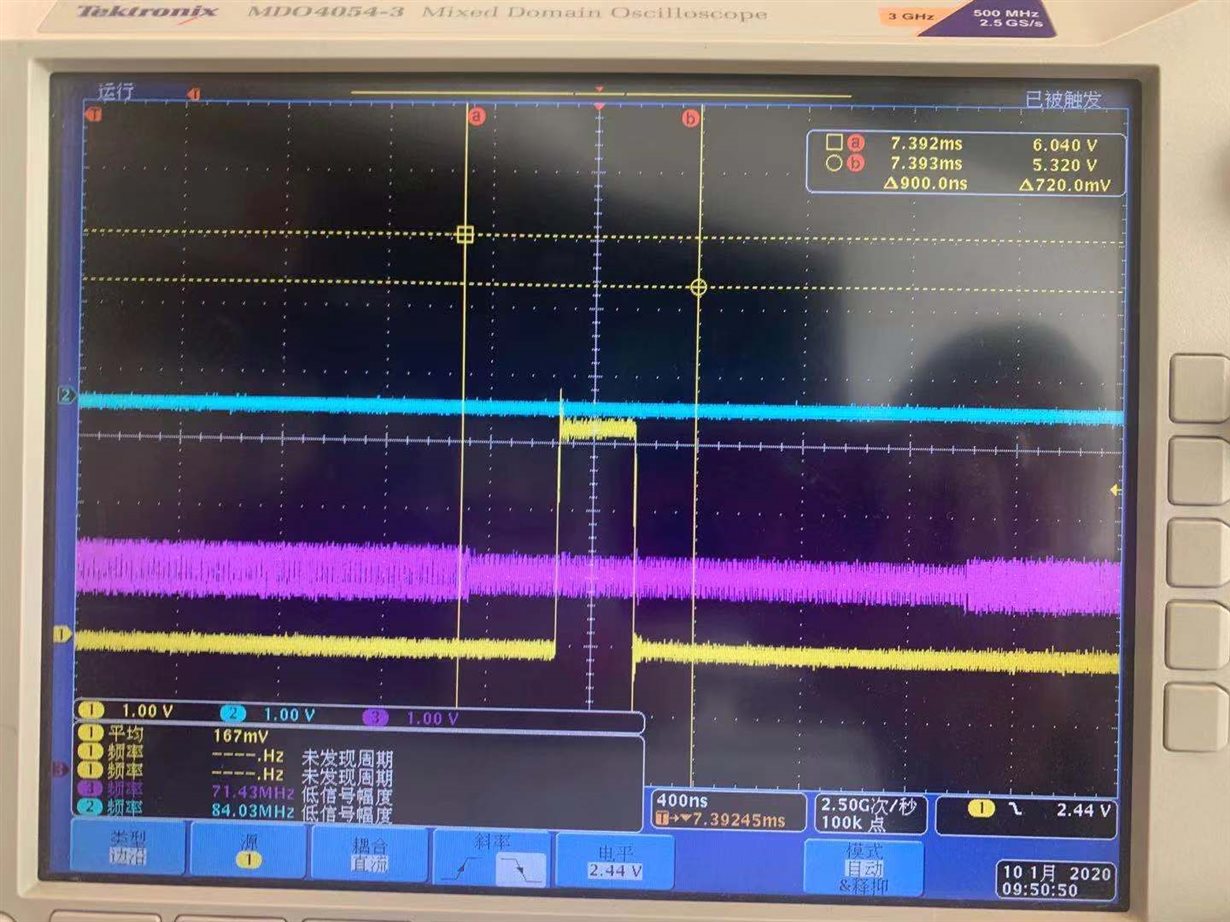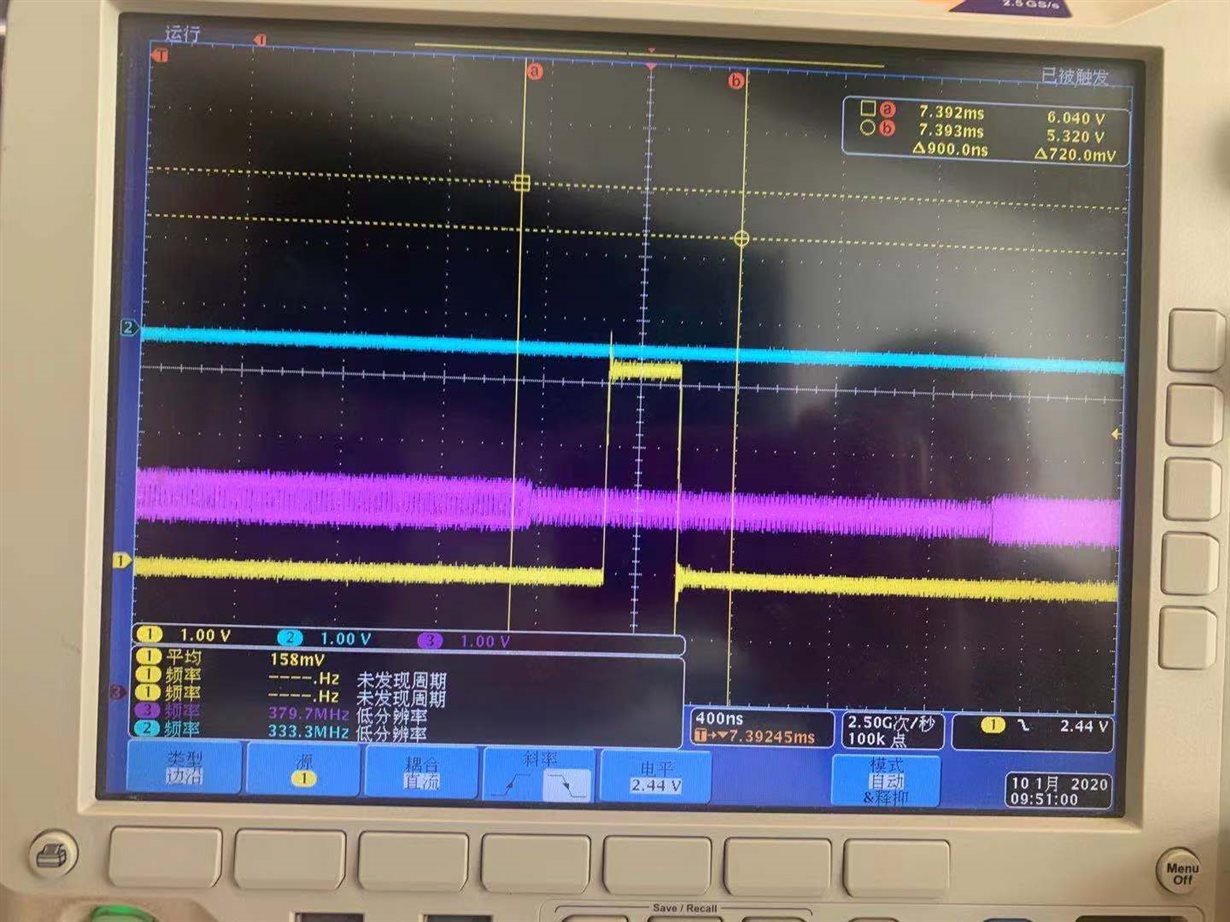I encountered some problems when using the TFP410. When using some chips, there will be a signal loss on some displays within 3 minutes after power-on. The screen will be black, then the signal is normal, and the signal will be normal in the future.
I measured some signals and found that the output data(TX2+) and line synchronization (HSYNC)would shift(About 40ns) at the moment of signal loss.
The following are oscilloscope pictures. The yellow one is HSYNC and the purple one is TX2 +.
I suspect that this displacement caused the display to lose the signal. Which conditions will cause this signal displacement, how to avoid this signal displacement?
Could there be other reasons for this phenomenon?
Thank you.



